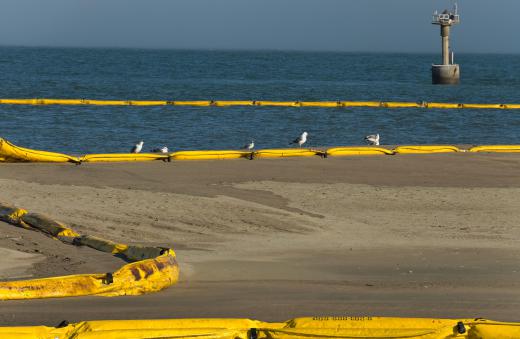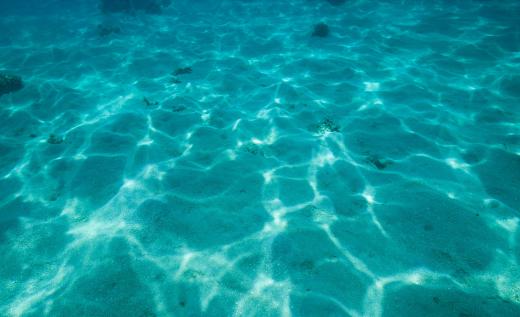A tarball is a clump of weathered oil from an oil spill or natural oil source, such as a deposit seeping from the ocean floor. Tarballs occur in marine environments all over the world and may travel considerable distances with the current. It is possible to determine the origins of a given tarball by testing the materials it contains, as tarballs will contain distinctive chemical markers depending on where the oil comes from. They are considered pollutants and can be a cause for concern when they appear in large numbers.
When petroleum interacts with seawater, it starts to degrade. The salty water and beating sun both act on the chemicals in the oil to change their composition. The oil may turn into a slick sheen spreading out over the surface of the water, and can also emulsify into clotted masses. When these masses start to break up as a result of wave action, they form tarballs, little nuggets of oil and trapped materials.

Over time, a tarball will solidify from the outside in. The outer surface can develop a thick, crusty layer while the inside remains partially liquid and sticky. Tarballs float on the surface of the water thanks to increased buoyancy because of the high salt content, and can eventually wash up on beaches and shorelines. Periodic tarballs are not uncommon, the result of minor oil and fuel spills and seepage from the Earth's crust. In the wake of a major oil spill, tarballs can be present in significant numbers.

Animals and humans who step on tarballs will find that the balls adhere to their feet or shoes as the crust cracks open and exposes the sticky interior. It can be difficult to wash off, and the petroleum can damage the skin. Frequent exposures may result in rashes, hives, and other signs of skin irritation. The components of the tarball may also include toxins from other sources that stick to the oil, making some tarballs more hazardous than others.
Tarball removal requires either manually picking up the balls of oil for disposal, using cleanup teams wearing appropriate safety gear, or using beach cleaning machines to comb through the sand and pull the deposits out. On a particularly contaminated beach, the best solution may be using heavy equipment to remove the upper layer of sand, and then replacing it with a new layer of clean sand from another source, like a neighboring beach.
Ever since she began contributing to the site several years ago, Mary has embraced the exciting challenge of being a About Mechanics researcher and writer. Mary has a liberal arts degree from Goddard College and spends her free time reading, cooking, and exploring the great outdoors.

